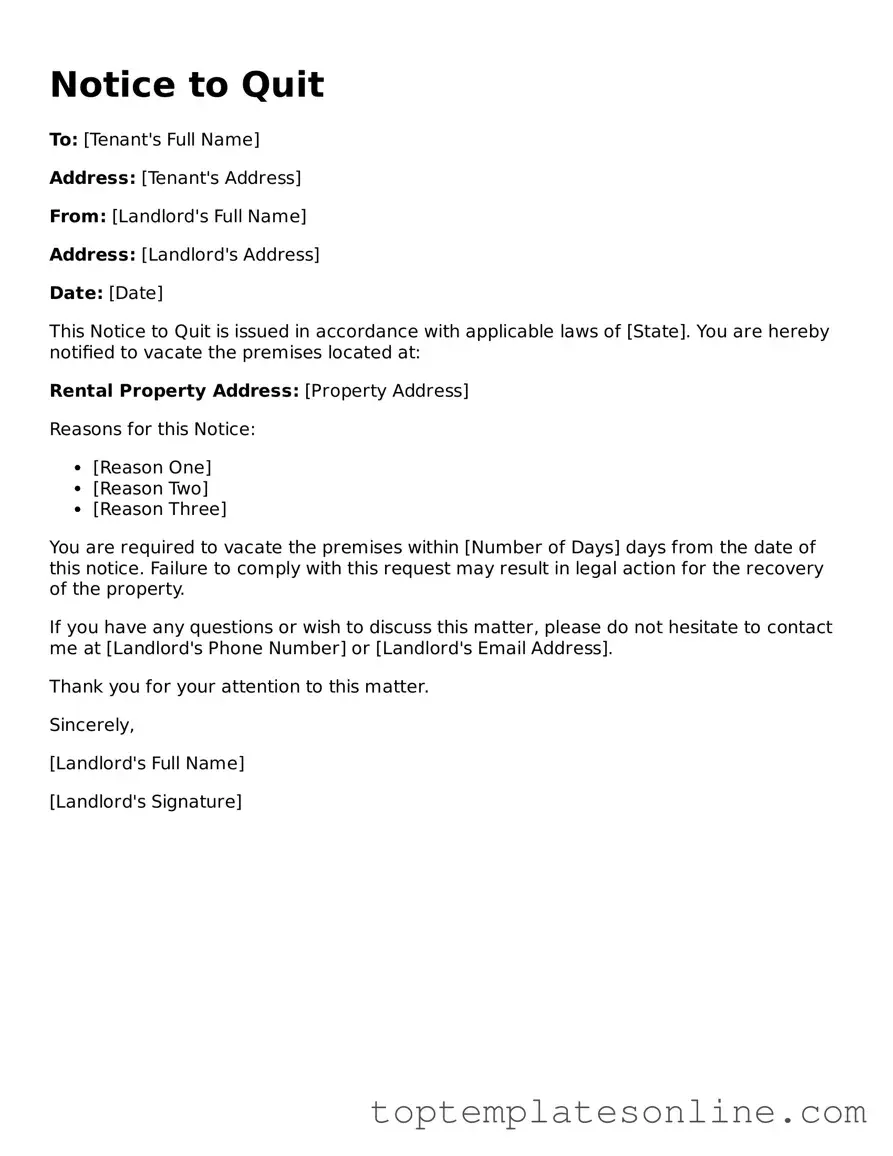The Notice to Quit form is a crucial document in the landlord-tenant relationship, serving as a formal notification to a tenant that they must vacate the rental property. This form outlines the specific reasons for the eviction, which may include non-payment of rent, lease violations, or the expiration of a lease term. It typically includes essential details such as the tenant's name, the address of the rental property, and the date by which the tenant is expected to vacate. Additionally, the form may specify any actions the tenant can take to remedy the situation, such as paying overdue rent or addressing lease violations. Understanding the Notice to Quit is vital for both landlords and tenants, as it sets the stage for potential legal proceedings while also providing an opportunity for resolution before escalation. By adhering to the proper procedures outlined in this document, landlords can ensure compliance with state laws, while tenants are given the chance to address their circumstances appropriately. This form serves not only as a legal tool but also as a means to facilitate communication and understanding between both parties involved.
